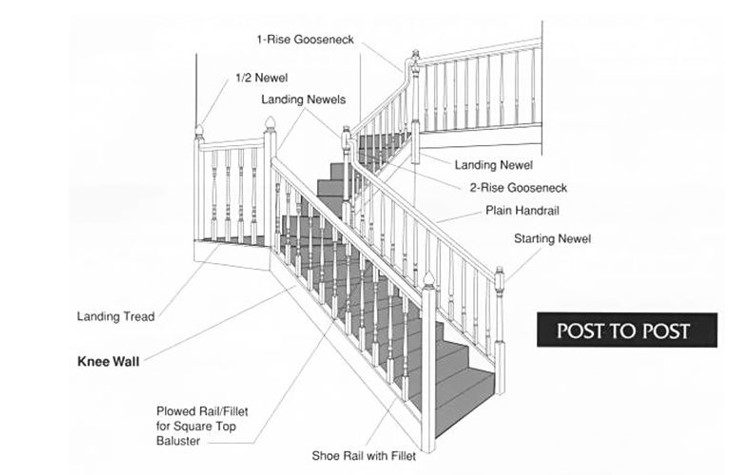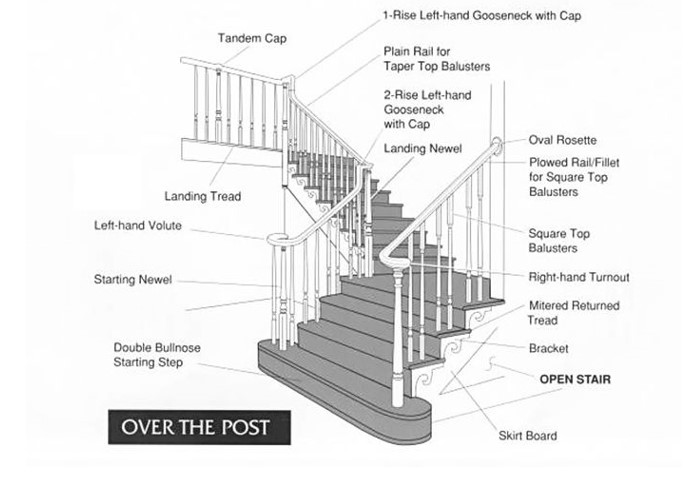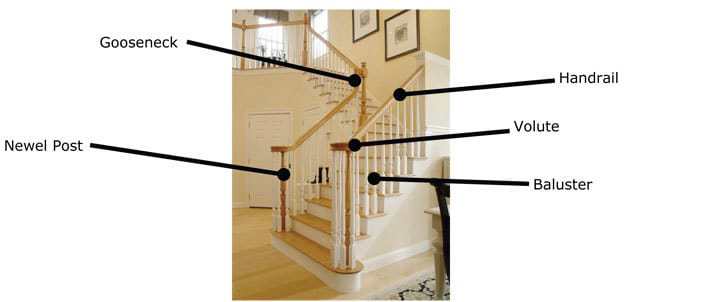No set of stairs is complete without the perfect finishing touch, a railing. Not only aesthetically pleasing, but stair railings also provide safety and security to your staircase. Most municipalities require a railing to meet building code, so be sure to check with your local codes office to get the right specifications.
There are two main types of railing systems, post to post and over the post.
Post to Post: The most cost-effective and simplest way to assemble a railing, this method has the railing intersect with the side of the end post and is affixed by screwing it together.

Over the Post: This construction has the railing running over the top of the posts. Over the post railings are more expensive because they require more parts and labor to install.

No matter the type of railing configuration, let the people at Curtis Lumber help you figure out the parts and pieces you need to put it all together and achieve your desired look.
The Balustrade
The balustrade is the term used to describe the protective and decorative railings used to keep you from falling off the side of the stairs and offer you support when walking down the stairs. The balustrade is composed of many different parts: the balusters or spindles, the newel posts, the handrail, the easements, and the goosenecks.
Balusters: The balusters, or spindles, are the thin posts that span the distance between the handrail and the steps. They can be made out of a variety of materials including wood or metal and can be very decorative or simple.
Newel Posts: The newel posts are the large posts found at the beginning, end, and on landings of staircases. Each type of newel post has a name that corresponds to its location on the staircase. For example, the top post on a staircase would be called a starter post because it starts the stairs. The newel post at the bottom of the stairs is called the number one post. Sometimes the newel post at the bottom of the stairs is called the focal point newel, which is a newel post that is very large and decorative. Newel posts on landings are referred to as landing posts.
Handrail: The handrail is the stair part that you put your hand on as you walk down a flight of stairs. The handrail sits on top of the balusters or spindles. The easements and goosenecks are the two stair parts that allow the handrail to change its slope. Handrails are generally made out of hardwood, with oak being the most common variety.
Shoe rail: A piece of wood running along the floor or at the top of a stringer that acts as a bottom railing for balusters to be inserted. Usually used for decorative purposes.
Accessories: Caps, rosettes, and volutes are some of the accessories that add the finished detail to a set of stairs. Caps are simple pieces that finish the end of a handrail. Rosettes are decorative pieces of wood used to finish off where handrail dies into a wall. Volutes are intricate caps that are made of handrails and shaped into a curl. The volute sits on top of both and end newel post and the spindles.

